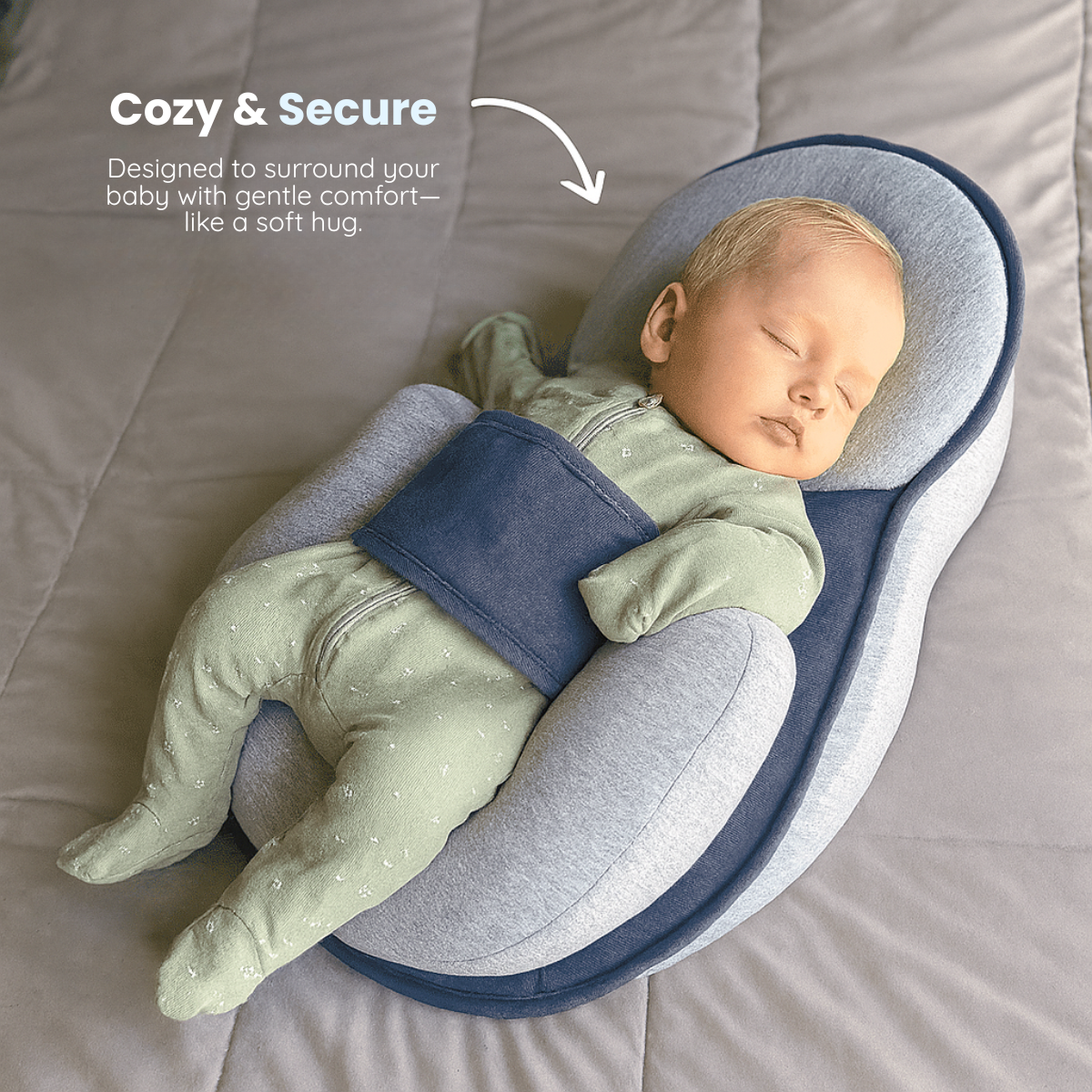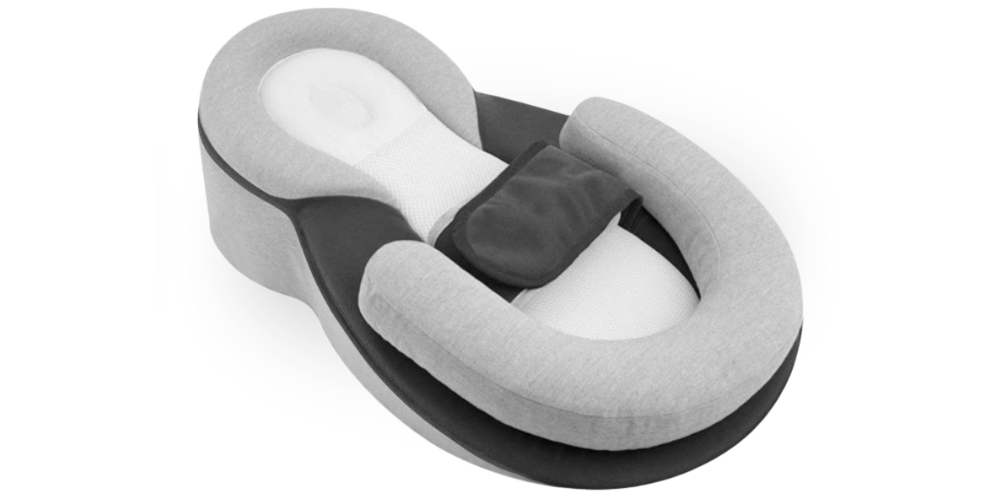If you’re reading this, chances are your nights have been filled with crying, feeding, and endless attempts to lay your baby down — only for them to wake up minutes later in discomfort.
You may have noticed that your baby sleeps better when held upright, and far worse when lying flat. You’re starting to wonder: Is there a better, safer way for babies with reflux to sleep?
You’re absolutely not alone. Let’s look at what pediatric experts say about reflux, sleeping positions, and how you can help your baby rest more comfortably — without compromising on safety.
Note: This article is for informational purposes only and should not replace professional medical advice.
Why Reflux Affects How Your Baby Sleeps
Reflux happens when the muscle between the stomach and esophagus (the lower esophageal sphincter) is still weak — allowing milk and acid to flow back up.
This can cause:
-
Frequent spit-ups after feeding
-
Discomfort or arching of the back
-
Restless naps and frequent night waking
When your baby lies flat, gravity no longer helps keep stomach contents down. That’s why reflux often feels worse during or after sleep.
But here’s the key: you can support digestion and comfort safely — without resorting to unsafe positions or risky props.
The Only Safe Sleeping Position for Babies
According to the American Academy of Pediatrics (AAP) and UK NHS guidance, the safest sleeping position for every baby — even those with reflux — is on their back.
Why?
Because back-sleeping significantly reduces the risk of Sudden Infant Death Syndrome (SIDS).
That said, there are ways to make this position more comfortable for reflux-prone babies without changing the position itself.
How to Help Your Baby Sleep More Comfortably on Their Back
Here’s what pediatric experts and osteopaths recommend:
1. Slight, supervised incline — not flat, not upright.
A gentle 10–15° incline can support digestion by helping gravity do its job. This angle is enough to relieve pressure on the stomach without compromising airway safety.
2. Keep baby’s head aligned with the body.
Avoid pillows or wedges under the head — these can cause the neck to bend awkwardly and increase risk.
3. Use an ergonomic support designed for reflux comfort.
Specialist baby beds like DreamNest™ feature a pediatric-recommended incline that helps digestion while keeping your baby safely on their back.
Its anti-roll barriers and secure wrap design prevent sliding or rolling, so your baby stays in a natural, safe position all night long.
4. Avoid unsafe props or DIY hacks.
Never prop the mattress with towels, cushions, or positioners that aren’t safety-tested. They can create gaps or suffocation hazards.
5. Hold upright after feeding.
Keep your baby upright for 20–30 minutes before placing them down — it helps reduce regurgitation.
Why Incline Matters (Backed by Pediatric Osteopaths)
A small incline (about 15 degrees) works because it:
-
Reduces the pressure of stomach acid against the esophagus
-
Promotes smoother digestion
-
Keeps the airway clearer during rest
Pediatric osteopaths recommend this gentle, ergonomic incline as a safe middle ground between lying flat and holding upright all night.
That’s exactly the design principle behind DreamNest™ — a baby bed created by American pediatric osteopaths to ease reflux naturally and help babies sleep longer stretches.
It’s not a medical device — it’s a comfort innovation that supports both baby’s rest and parents’ peace of mind.
Additional Tips to Improve Sleep Quality
-
Keep the sleep environment cool, dark, and quiet.
-
Feed calmly — avoid overfeeding or rushing.
-
Elevate your baby’s legs slightly, not their head, to ease digestive flow.
-
Choose breathable sleep materials to prevent overheating.
-
Avoid unnecessary swaddling pressure around the stomach area.
These simple changes, combined with an ergonomic sleep setup, can make a huge difference in your baby’s comfort and your ability to finally get some rest.
When to Seek Medical Advice
While reflux is common, you should contact your pediatrician if your baby:
-
Is losing or not gaining weight
-
Spits up forcefully or vomits blood
-
Cries constantly during or after feeds
-
Has difficulty breathing or persistent coughing
These symptoms may indicate gastroesophageal reflux disease (GERD) or another medical concern that requires professional evaluation.
FAQs
What position should a baby with reflux sleep in?
Always on their back. You can use a safe, gentle incline (about 15°) to support digestion — but never place your baby on their stomach or side to sleep.
Do I need a special wedge or mattress?
If you use any incline, make sure it’s built into a tested ergonomic sleep system like DreamNest™ — never add loose items under a mattress.
Can babies with reflux sleep flat?
Some can, but many sleep more comfortably with slight elevation. Follow your pediatrician’s guidance.
Is inclined sleep safe?
It is safe only if the product is specifically designed and safety-tested for that purpose — with breathable materials and secure anti-roll design.
Conclusion: Comfort and Safety Can Coexist
You don’t need to choose between safety and sleep.
By following expert-backed sleep practices — and using smart, ergonomic solutions designed for reflux comfort — your baby can finally rest longer and wake happier.
And you? You’ll wake up to something even better: peace of mind.



